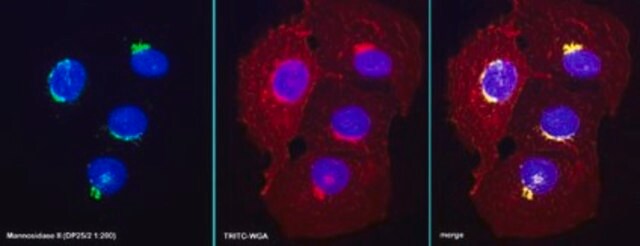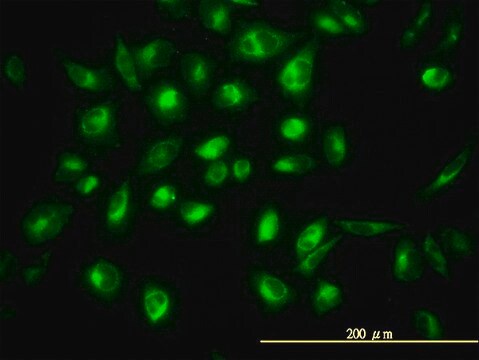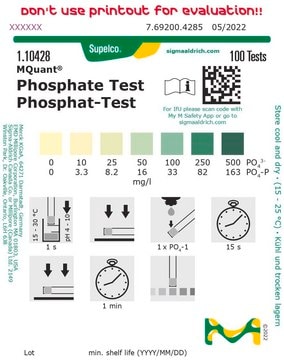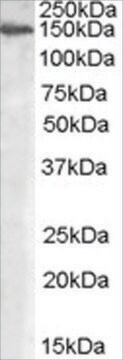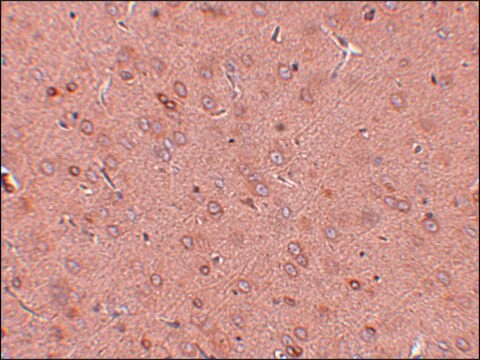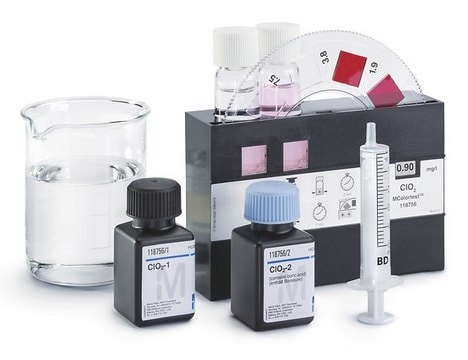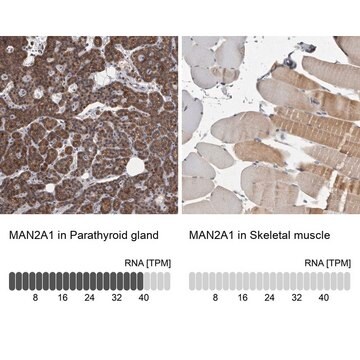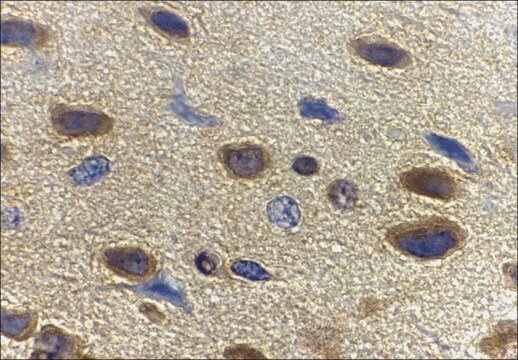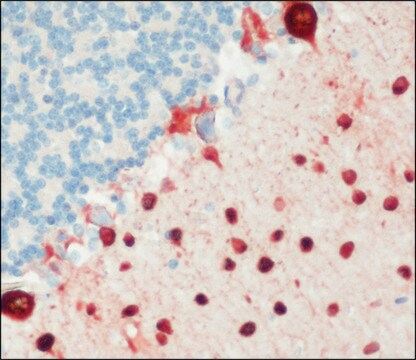MAB1271-I
Anti-Golgi Zone Antibody, clone 371-4
About This Item
Polecane produkty
pochodzenie biologiczne
mouse
Poziom jakości
białko sprzężone
unconjugated
forma przeciwciała
purified antibody
rodzaj przeciwciała
primary antibodies
klon
371-4, monoclonal
masa cząsteczkowa
calculated mol wt 134.55 kDa
oczyszczone przez
using protein G
reaktywność gatunkowa
human
reaktywność gatunkowa (przewidywana na podstawie homologii)
monkey
opakowanie
antibody small pack of 100 μg
metody
immunocytochemistry: suitable
izotyp
IgG1κ
sekwencja epitopowa
Unknown
numer dostępu Protein ID
numer dostępu UniProt
Warunki transportu
2-8°C
docelowa modyfikacja potranslacyjna
unmodified
informacje o genach
human ... GLG1(2734)
Opis ogólny
Specyficzność
Immunogen
Zastosowanie
Evaluated by Immunocytochemistry in HeLa cells.
Immunocytochemistry Analysis: A 1:500 dilution of this antibody detected Golgi apparatus protein 1 in HeLa cells.
Tested Application
Immunocytochemistry Analysis: A 1:500 dilution of this antibody detected Golgi apparatus protein 1 in A431cells.
Immunocytochemistry Analysis: A representative lot detected Golgi Zone in Immunocytochemistry applications (Endo, Y., et al. (2007). Cancer Sci.;98(10):1633-7; Strehlow, A.N., et al. (2007). Hum Mol Genet.;16(4):391-409; Oiso, S., et al. (2009). J Neurochem.;109(1):158-67; Leite, C., et al. (2014). PLoS One.;9(10):e111059).
Note: Actual optimal working dilutions must be determined by end user as specimens, and experimental conditions may vary with the end user
Postać fizyczna
Przechowywanie i stabilność
Inne uwagi
Oświadczenie o zrzeczeniu się odpowiedzialności
Nie możesz znaleźć właściwego produktu?
Wypróbuj nasz Narzędzie selektora produktów.
Kod klasy składowania
12 - Non Combustible Liquids
Klasa zagrożenia wodnego (WGK)
WGK 1
Temperatura zapłonu (°F)
Not applicable
Temperatura zapłonu (°C)
Not applicable
Certyfikaty analizy (CoA)
Poszukaj Certyfikaty analizy (CoA), wpisując numer partii/serii produktów. Numery serii i partii można znaleźć na etykiecie produktu po słowach „seria” lub „partia”.
Masz już ten produkt?
Dokumenty związane z niedawno zakupionymi produktami zostały zamieszczone w Bibliotece dokumentów.
Nasz zespół naukowców ma doświadczenie we wszystkich obszarach badań, w tym w naukach przyrodniczych, materiałoznawstwie, syntezie chemicznej, chromatografii, analityce i wielu innych dziedzinach.
Skontaktuj się z zespołem ds. pomocy technicznej